- By Mark Russell
- July 16, 2021
- RS
- Feature
Summary
Use existing field devices, network connections, and controllers to build an edge-connected system that harnesses the full power of factory data. This article comes from the IIoT & Industry 4.0 eBook.
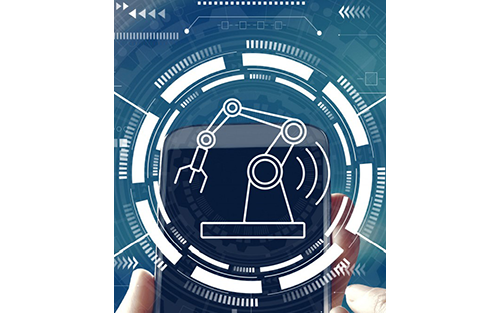
Is your factory living in the dark ages? Are you constantly checking manual reports to see your production scores? Do you wish that you could check your factory health on your smart device from anywhere in the world? If so, you could benefit from taking your factory to the edge.
In this article, we will discuss what you need to know to convert your legacy equipment into an edge-connected system and all the advantages this transition can offer. By the end, you will understand how an edge-connected factory can enable you to view and harness your production data and make it work for you.
Layers of an edge-connected factory
You do not have to start from nothing to harness the power of the edge. You can convert your legacy equipment to edge control, whether you have a system based on PLC-5, S3, or a cutting-edge ET 200SP or NX102.
You can make a move toward the edge without redesigning your control strategy. Most of us have our preferred fieldbuses, and fortunately there are plenty of options out there to make us all feel comfortable. Many of us are also starting to develop our own favorite cloud options, SQL flavors, and non–IEC 61131-3 programming environments.
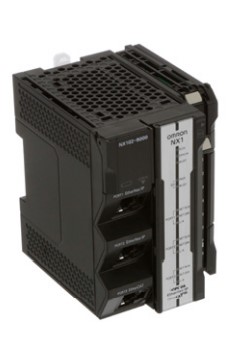
Field components
Field components consist of sensors, motors, conveyors, actuators, and all the other things that either look at or interact with the real world. Field components can be old or new, as long as they function in your facility.
For field components, the IO-Link communication protocol can come in handy for install and control strategies, but is not necessary for data harvesting or easy edge conversion of a factory. This means that no matter what field components you have, as long as they work, you don’t need to fix what isn’t broken.
Connectivity
Next, we will take a look at the connectivity of field components. There are two approaches, and we will start with the simple one: straight copper connection. This applies to anything connected directly to control hardware through basic (usually direct) wiring, whether that is digital I/O connected to the controller or analog sensors, highspeed counters, or pulse outputs. This is the easy approach, because the number, placement, and technology type of straight copper connections pose no challenge to implementing edge technology.
The second approach to connectivity is networked field components. This could apply to human machine interfaces (HMIs), variable-frequency drives (VFDs), remote I/O over a fieldbus, or any field device that interacts with or serves the controller in the system. These types of devices will lead you to your first real decision about the architecture of your edge solution. There are two ways to go:
- Option 1: Read data directly from these devices.
- Option 2: Ignore the data at this level and read the relevant information from your controller.
There are cases to be made for both options. We will look at them each in turn.
Option 1: Read data directly from field devices
Reading information directly from our fieldbus-connected devices works great for a retrofit if you are an end user and not a programmable logic controller (PLC) programmer, or if you do not have access to the controller in the system because the integrator did not provide source codes. You can use a number of protocol converters and commercially available edge connection devices to take your machine-level data to an edge platform with some basic education online. For a large number of users, this option will get their factory “talking” to them for minimal human or equipment capital. It will require only protocol conversion and an edge connector (which we will discuss in a moment) and the cloud setup of choice, which can be outsourced.
Option 2: Read data from controller, ignoring field devices
This option is great for PLC programmers or other users who may want to condition their data or limit the number of end points that need to be managed to bring data to the edge. Reading data directly from the PLC allows you to add scaling, build data types for managed data or even build-related data points. All of this could also be done in your cloud or other edge supervisory control and data acquisition (SCADA) environments (again, more on that later).
Controllers
Next up the electron flow is controllers. This level involves the simplest and perhaps the most crucial decisions you will make when considering an edge solution for your plant floor. There are several factors to consider in this layer of your automation system.
The first question to ask is: Do you like what you have? If the answer is yes, look into what fieldbuses your controller has available. Are you using an octal-based controller with tried-and-true RS-232 serial communication or Data Highway Plus? Do you have the ability to install more options? These are not barriers to getting to the cloud, just new challenges that can be leveraged into useful data.
The next question to ask is: What communication buses do you have? EtherNet/IP, Profibus, Profinet, EtherCAT, EthernetTCP, or ASCII? None of these are necessarily easier than the others, but EthernetTCP tends to make things a bit more streamlined.
Ultimately, what you are deciding in this layer is two-fold. First, do you keep your current controller, or do you modernize? Second, what fieldbus would you like to use? Keep in mind that while certain fieldbuses might make getting to the edge easier, any of them can be harnessed.
Protocol conversion
The next layer up is protocol conversion. This layer may not be necessary if you are using a controller with built-in edge connectivity. There are several such controllers from most of the major players, but they are relatively new, and as we have mentioned in this article a few times now, we do not want superfluous upgrades to our systems.
If you are not using an industrial Ethernet–based system, then you will definitely need protocol conversion. Even some of the Ethernet– based systems will still benefit from being converted. To make working with your data as easy as possible, getting to either EtherNet/IP or Modbus TCP/IP could streamline your process.
Cloud and edge connectors
The first truly new piece of technology we will consider is the cloud connector and edge connector. These terms are somewhat interchangeable, but there is a difference.
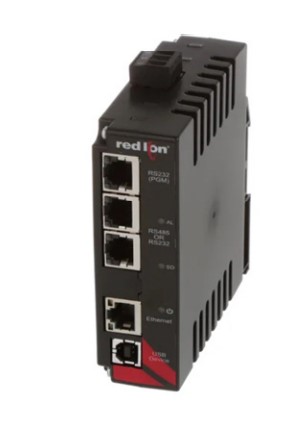
An edge connector, on the other hand, is a bit more sophisticated. These can be integrated into a controller or can be standalone pieces of equipment. Edge connectors offer several functions that help you condition your data for use in visualization and data utilization systems. Often, edge connectors will also work as protocol converters for fieldbus systems. The choice of how to harness your data is completely up to the end users. The best advantage of this flexibility is that it allows end users to leverage their own strengths in either industrial or computer programming.
The last layer
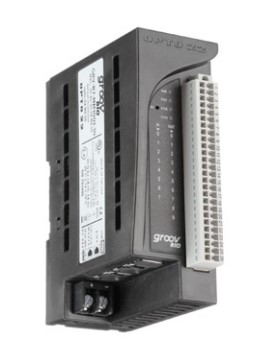
In this last layer, the key is to decide how you want to leverage your data and then compare the advantages of providers in the chosen space.
Advantages of an edge-connected factory
Now that we have gone through the layers of an edge-connected factory, let’s look at the advantages of an edge-connected system.
Remote access to data
The most obvious benefit of edge-connected factories is the ability to access your data when not on the factory floor. This remote access to data comes with several side benefits. For instance, it gives you the ability to track efficiencies or weak points inside your factory in a more businessfriendly platform. It also gives you the ability to bring data from multiple sites into one place. This allows you to compare how your facilities differ and effectively manage resource distribution, such as deciding to replace a certain piece of equipment in one factory before another.
Dashboards at every level
Having an edge-connected factory also allows for multiple data streams that can be tailored for particular users or levels of the business. You can harness the low-level data stream for the maintenance and continuous improvement staff to keep your operation up and look for cycle improvements. You can create a higher-level dashboard that shows live data in a simple format for operation managers to be able to monitor the output of the facility and keep the process moving smoothly. Lastly, you can create a feature-rich visualization system that you can access from anywhere with an Internet connection to keep all stakeholders in the loop. Perhaps the most useful aspect of a multilevel dashboard system with remote access is the amount of support that can be offered from off-site personnel to workers trying to remedy breakdown situations.
Brand agnosticism
The essence of a cloud system is based on data, not hardware. As such, part of the beauty of this approach is complete brand agnosticism. Because you do not need to have your whole plant on one type of fieldbus, you are free to add pieces in the quickest and cheapest manner. This frees up capital in both a human and machine sense to truly make your factory an on-demand data pipeline.
Take the edge connector component of your architecture. Several edge connectors, such as the PLCnext from Phoenix Contact or the groov EPIC or RIO systems from Opto 22, give programs access to software packages with RESTful interfaces and APIs to connect to them. This means one can query data from a field device into an automated report that can be run on-demand through a dashboard or be waiting for you in your inbox each morning.
One of the best software tools in the market for creating reporting, messaging, and general on-demand information is Node-RED, an open-source graphical flow-based programming tool. The beauty of this interface is the simplicity in which data can be processed from your machine into a simple dashboard or pushed into an email, text, tweet, or Slack feed. Node-RED allows any novice JavaScript users to truly understand their data.
Information on demand
Now for a fun twist. Have you ever been standing in your kitchen and asked “Hey Siri,” or “OK Google,” or “Alexa, what’s the temperature outside?” and within a handful of seconds and no additional effort on your part, you know if you need to grab that jacket? We all have—it is the new way of the world.
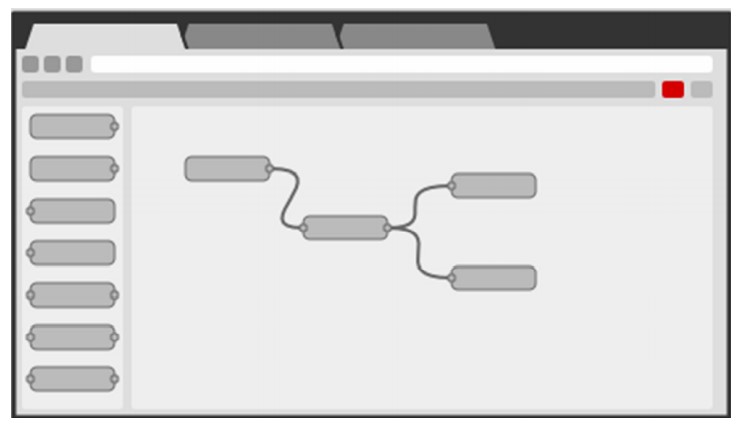
Now imagine you are in your office, it’s 7:30 at night, and you are finishing up that last report for the boss. You need to know total productivity that day. Sure, we just built a dashboard that has that information, and perhaps you have a report in your email that has the numbers you need. But with a little bit of ingenuity, you can instead ask your Alexa-enabled device about your factory, since Node-RED is an Alexa skill. It is not as easy as setting up your Echo to play your kid’s favorite tunes, but with just a little bit of perseverance (or some help from a programmer) you can make a flow in your edge controller’s Node-RED instance, register it with your Amazon account, and voilà. Now you can say “Alexa, ask Node-RED what my total output was today.”
Now that’s information on demand.
Building an edge-connected factory
As we have seen in this article, building an edge-connected factory does not require ripping and replacing your legacy equipment. You can use your existing field devices, network connections, and controllers to build an edge-connected system that lets you harness the full power of your factory data. Not only will this give you remote insight into your operation and let you create custom dashboards for every level of user, it will also unlock true information on demand.
This article was sponsored by Allied Electronics. For more information about building your own edge-connected system, visit AlliedElec.com.
This article comes from the IIoT & Industry 4.0 eBook.
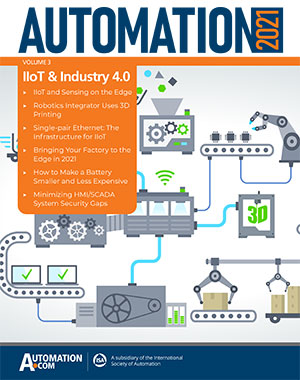
About The Author
Mark Russell is an experienced control system expert and technical application support manager with Allied Electronics & Automation, headquartered in Fort Worth, Texas. Allied is an omni-channel authorized distributor of industrial automation and control products, electronic components, and electromechanical products. With more than 3.5 million parts from 500+ brand-name suppliers available, Allied is your one-stop shop for all your automation and control solution needs.
Did you enjoy this great article?
Check out our free e-newsletters to read more great articles..
Subscribe